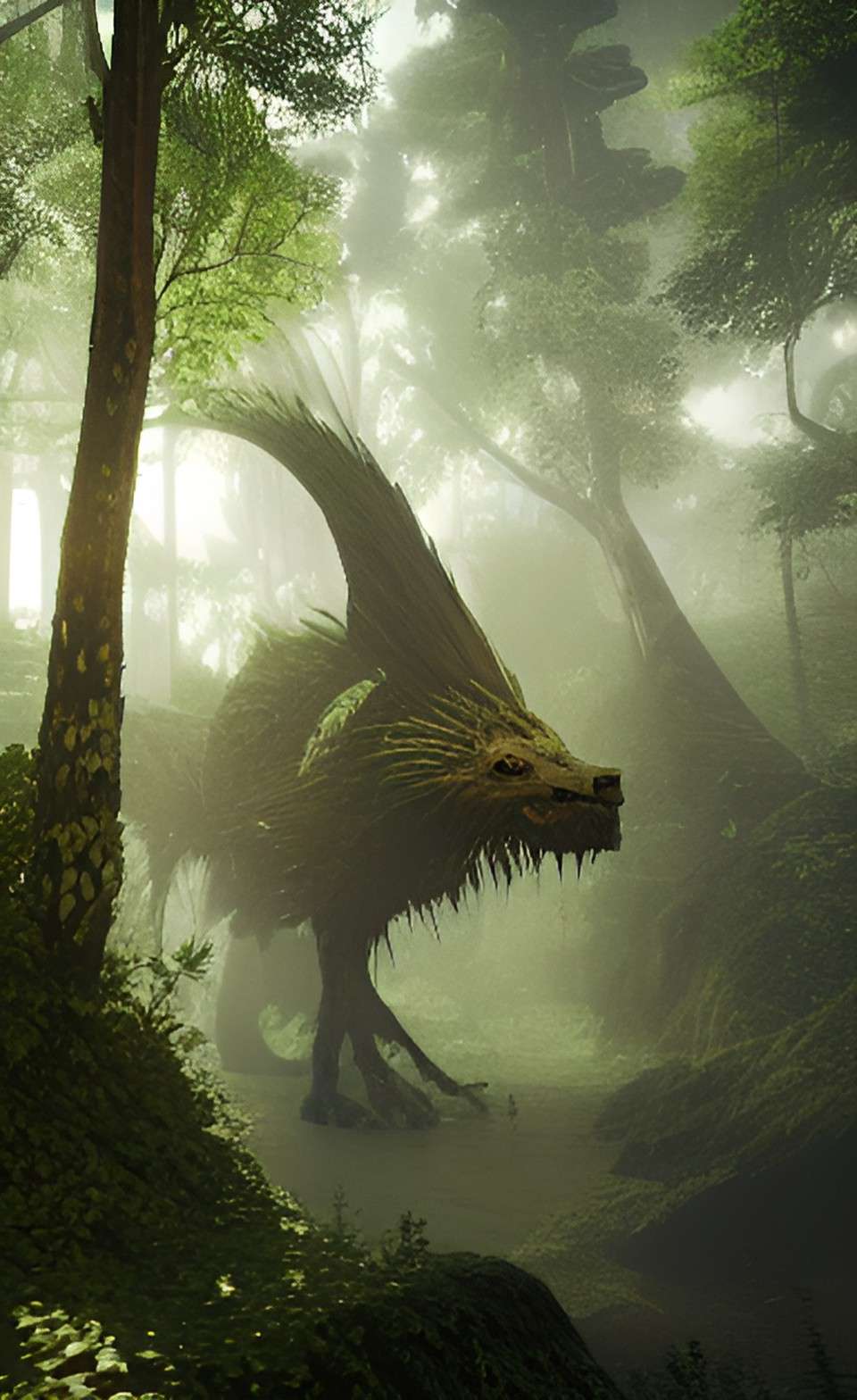Wood Wolf
Basic Information
Anatomy
Wood wolves are plant based woodland creatures that are purely made of plants, trees, and other such flora. Their bodies are completely made of vines which intertwine with each other and attach to hollowed logs and bark that form the outer shell of the body. The legs of the wolf appear to be a combination of vines, tree trunks, and roots which dig into the ground wherever they step. They are well known for the massive moss covered horn attached to the top of their head.
Ecology and Habitats
Being woodland spirits/elementals they stick firmly within woodland environments, and seldom leave these environments. They serve the forest as a form of defense for it, and tend to roam around looking for those who might seek to harm the forest. They can also be found guarding sanctuaries hidden within jungles and forests. Typically they are docile to those who come in peace, and are a bit skittish.
Dietary Needs and Habits
Wood wolves only require water in order to survive, keeping the plants that cover their body and the vines that make up their internal structure alive. Aside from this, the only thing they need to survive is the natural energy that is present within their habitat. Oftentimes they simply skulk around, spreading flora and pollen across the forest.
Biological Cycle
While there is not much of a biological cycle that they go through over the course of a year, they do become weaker when the forest and fauna within go into hibernation over the winter. As the leaves fall, wood wolves become less prevalent and even become dormant as the snow falls. Sometimes the only evidence of a wood wolf is a dormant wood shell that it uses as a body.
Behaviour
Wood wolves are peaceful and skittish to people naturally. They have no need to hunt, and thus are neutral to most things that are found within the woodlands they call home. Only when someone threatens the forest or jungle they live in will they become hostile, and attempt to attack the person responsible.
Additional Information
Facial characteristics
The faces of wood wolves look a bit like carved masks that resemble the facial structure of a wolf. The only opening in the face is the mouth and eyes, both of which glow with a vibrant green of nature energy. Despite being made of solid wood, the jaw appears to be able to snap open and closed to simulate a biting motion.
Geographic Origin and Distribution
Due to them only being located within woodlands, they have a very poor geographic distribution anywhere else. Wood wolves will not be found in many locations that don't support flora or have plenty of water. The most exotic locations a wood wolf can be found are locations where they are specifically summoned, and even then there is likely a good deal of flora within the vicinity of this location, such as small sanctuaries deep in dungeons or small habitats
Perception and Sensory Capabilities
While at first glance one might assume these creatures have no extra senses, they do have a very keen awareness of their surroundings using the information they collect through flora. When their feet dig into the earth they can detect predators and other creatures in their surroundings through the plants and trees around them, though during this process they become rooted and can not move.
Symbiotic and Parasitic organisms
There is a vast ecosystem of bugs that tend to infest and live within these creatures. Generally the wood wolf doesn't mind these passengers, unless they are parasitic such as termites. With some level of control over the forest, it is very rare that any parasitic species are capable of resisting the influence of a wood wolf.
Lifespan
500+ years
Average Height
15-20 ft
Average Length
8-14 ft
Average Physique
Because internally wood wolves are a multitude of vines under the control of a forest spirit, they can be a bit amorphous and can move quickly through small spaces and even through the earth. In order to do this they must shed the wood/bark they use as skin, and then recreate it where they reform at. This also allows them to be rather large, with the only limit being how much flora and energy is present in the ambience around them.
Body Tint, Colouring and Marking
While the color of the flowers and plants can change, the overall natural color of greens, browns, and flower petals are unchanging. Sometimes the colors can be altered if the environment of the forest or woodland is colder or warmer, but overall the creature tends to look the same due to the amalgam of plants and trees used to make one.
Remove these ads. Join the Worldbuilders Guild









Comments